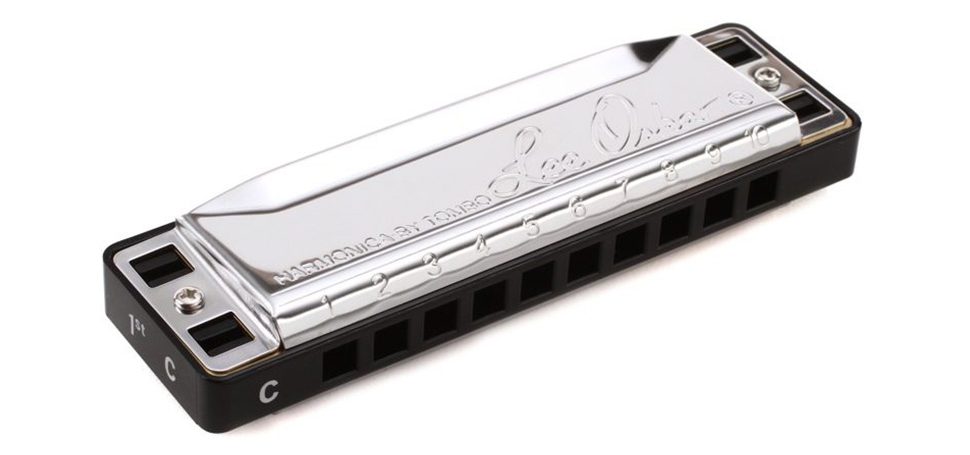
Features
- One of Harmonica.com’s top rated harmonicas for beginners and intermediates.
- Easy to bend, highly responsive, solid tone.
- The most important difference is in the quality of materials, construction, design and sound. Lee Oskars are some of the best harmonicas in the world, and that’s not just our opinion.
Is the Lee Oskar Any Good?
Verdict – Lee Oskar harmonicas are my harmonicas of choice. They are the #1 harmonica that I have played over the decades at countless gigs, recording dates, and jam sessions, and I’ve never had a problem with them. They’re very responsive, very easy to bend, sound great, are comfy to play. They have easily readable key labels giving you the key for 1st and 2nd position to remove any guesswork, and they are durable. They are especially good for single note playing. 4.8/5 Stars
Bendability – I find it easy to bend and control all of the draw bends and blow bends on this harmonica. Ease of bending is what first drew me to this harmonica way back in the 1990’s. Today, it is comparable to the Hohner Special 20 in how easy it is to bend. 5/5 Stars
Comfort – This harmonica is super comfy on the lips with a plastic comb, chromed cover plates, a countersunk reed plate that doesn’t jab into the lips, and the corners are slightly rounded so that it doesn’t poke your hands and cause pain. I should note here that I have read posts on harmonica forums of people complaining that their mustache hairs get ripped out when playing Lee Oskars, so if you have a big unruly mustache, this might be a consideration. I trim facial hair near the corners of my mouth, so it’s not a concern for me. 5/5 Stars
Responsiveness – Everything responds exactly as I would hope for, allowing me to play very fast passages, and to execute syncopated rhythms with ease. 5/5 Stars
Tone – Nice bright tone, loud projection, and always in tune right out of the box. The tone of this harmonica is quite comparable to the Hohner Golden Melody. Both the Lee Oskar and the Hohner Golden Melody are tuned using an “equal tempered” rather than a “stretch” tuning which makes them especially good for playing single notes. If you’re playing lots of chords in a folksy style, you might prefer the Hohner Special 20, and if you’re playing more melodically you might prefer the Lee Oskar. 4/5 Stars
Looks – The Lee Oskar is not much to look at. Your standard black plastic comb harmonica. The reason I give it a 5/5 stars for looks is because the key labels are so fantastic. Lee did a great job with this design, and I can’t figure out why other manufacturers haven’t copied his idea. The key labels are big and easy to read even in dark clubs. On the front of the comb and the left side of the harmonica you have the 1st position key label, and on the right side of the harmonica you have the 2nd position key label. Now if you’re playing in 2nd position, you don’t have to do alphabet math in your head when the band leader shouts out the key. This is just so cool! 5/5 Stars
Durability/Fixability – These harps have really stood the test of time for me. In fact, at one point in my career I actually switched from Lee Oskar to Special 20’s, but I found I was blowing out reeds on the Special 20’s so often, and that’s why I switched back to Lee Oskar. I should note that I was playing very hard at that time, and I’ve since modified my technique to play much lighter. Still it’s a testament to the durability of Lee Oskar’s harmonicas. The plastic comb isn’t susceptible to any of the swelling, splintering, or cracking that a wood comb could be over time. The cover plates are attached with Phillips head screws which make this harmonica easy to fix/tune. Also, you can buy replacement reed plates and save a few bucks compared to buying a whole new harmonica.
From the Manufacturer
The Major Diatonic is the standard Blues tuning and may be played in the 1st & 2nd Positions (Straight Harp & Cross Harp).
The evolution of music introduced Blues, Rock and Country and along with these new forms of music came the need for greater expression. Harmonica players began to experiment and found that when they primarily used the inhale (draw) notes, a different kind of sound was provided. This resulted in a new and more fluid style of playing, known as 2nd Position (Cross Harp). 90% of today’s players use 2nd Position for Blues, Rock, Country & Pop music.
2nd Position (Cross Harp), is a Blues scale that offers a more expressive and soulful sound. Many of the draw reeds can be bent (a technique used to change the pitch of a note).
All over the world, professional players prefer Lee Oskar Harps over any other brand.
PROS
Great for all styles of music
Beginners find this harmonica easy to play
CONS
No cons, unless you have a big unruly mustache!


Comments
Got something to say? Post a comment below.